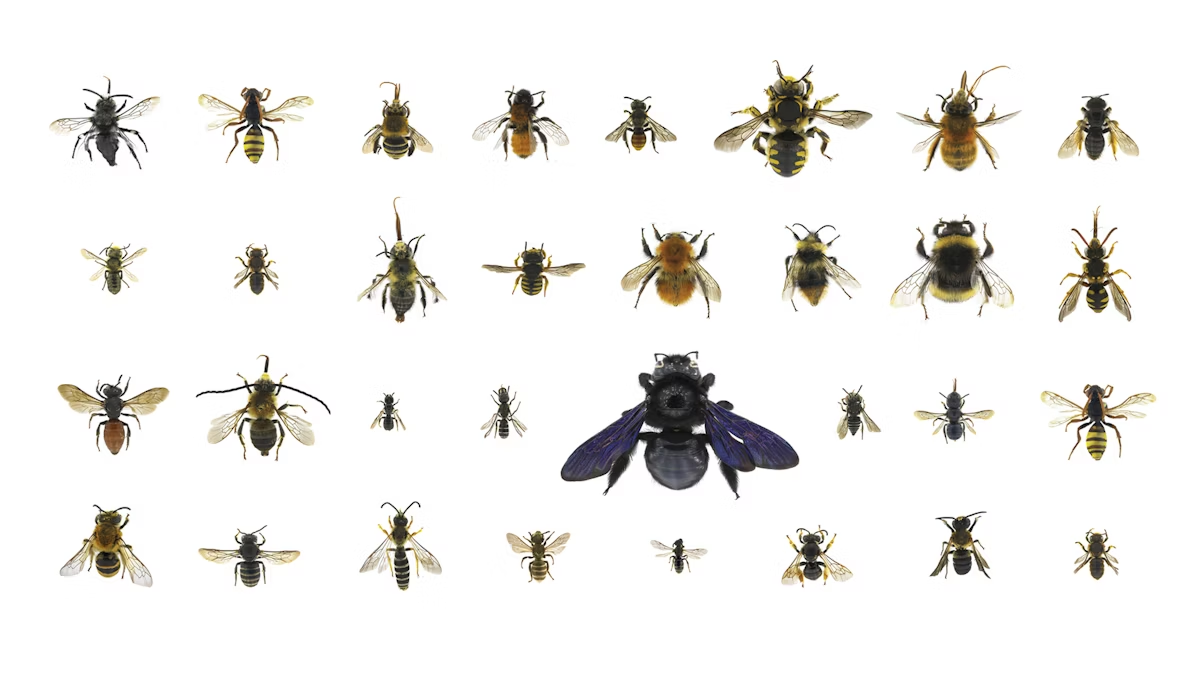At Eurac Research: The Variety of Native Wild Species: BEEhold, The South Tyrolean Bees on Display
01 May 2025
At Eurac Research: The Variety of Native Wild Species: BEEhold, The South Tyrolean Bees on Display
When thinking of a bee, the image that comes to mind is often that of a small insect covered in yellow and black fuzz, flying from flower to flower collecting pollen. However, there are more than a thousand bee species in Italy, with five hundred found in the South Tyrol area alone, a highly heterogeneous group in terms of anatomy, ecology, and behavior.
Some species have long proboscises, others have mandibles similar to ants, and some bees carry pollen stuck to their fuzz, while others ingest it and regurgitate it once they reach their destination. The size of the bees also varies considerably: the largest species is three times the size of the smallest. Not all of them even carry honey; some bees patrol the flowers whereas females collect the pollen. The males of the wild species Anthidium florentinum (Florentine Woolcarder Bee), present in South Tyrol, have pointed protrusions on their abdomens that they use to attack other bees.
The variety of species in South Tyrol is due to the enormous diversity of environments found in the province. The great altitude difference, from the plain to nearly 4000 meters at Ortles, makes the area suitable for hosting species with different needs and habitats.
But what does this biodiversity represent? Eurac Research is funding research aimed at understanding the health status of wild bees in South Tyrol and their importance. To do this, a census is first required, conducted by Lisa Obwegs, a doctoral student at the University of Innsbruck and the Institute for Alpine Environment at Eurac Research. Her collection of native specimens aims to raise awareness among adults and children about the enormous role that bees play in maintaining the natural balance and is the subject of educational events.
In spring, for example, Bolzano hosted a photographic exhibition featuring the windows of numerous shops in the city center, displaying 30 images of native wild bees, sparking great curiosity among locals and tourists.
Given the importance of the topic and the research underway, it has been decided to organize a photographic exhibition during the next year.
Picture: BEEhold, Courtesy Eurac Research


